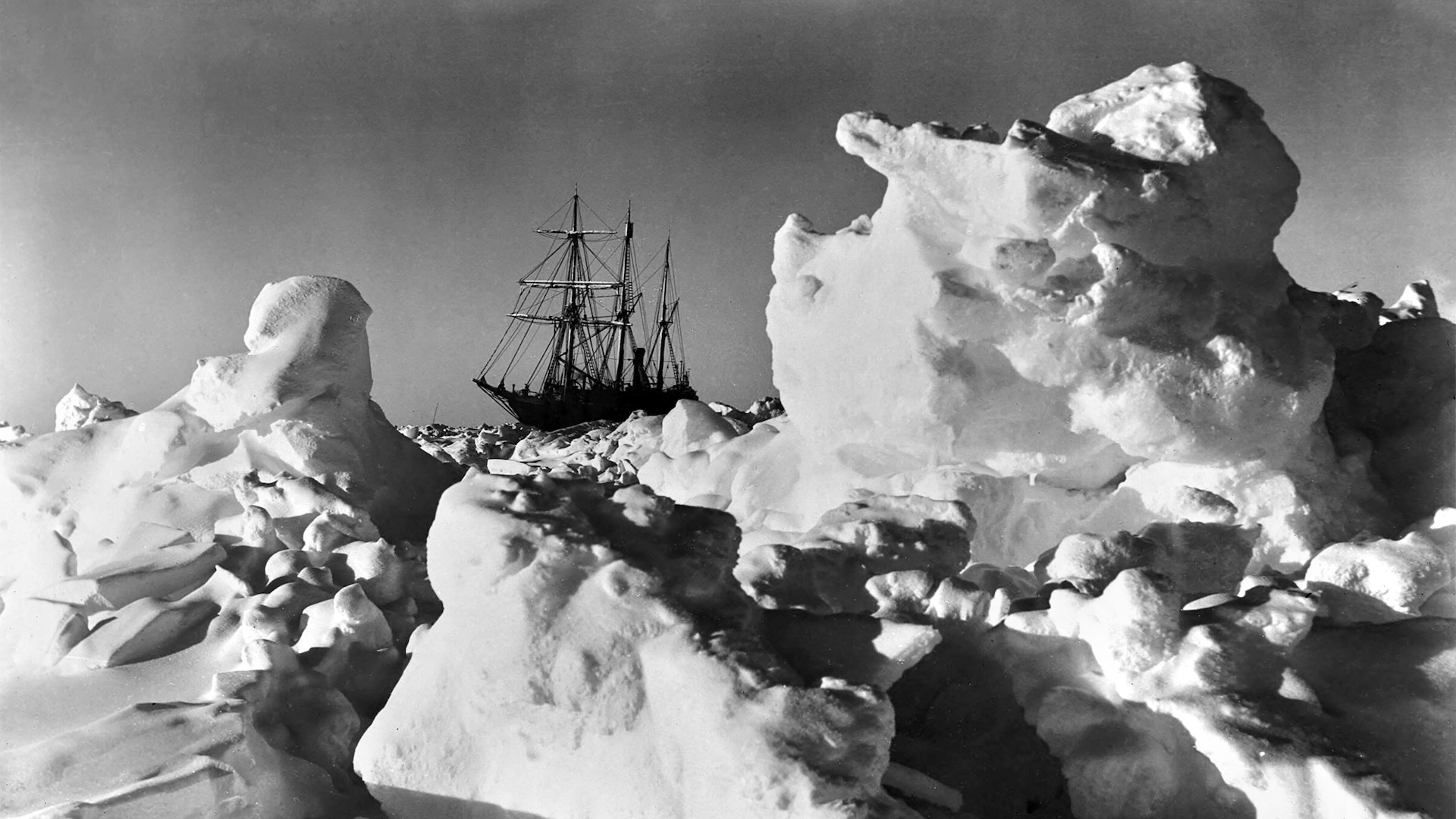Shackleton's infamous ship 'Endurance clearly had several structural deficiencies,' new analysis reveals
Ernest Shackleton's ship, the Endurance, infamously sank in Antarctica — and now a new study finds that it had known flaws.

The infamous ship Endurance, which sank in Antarctica in 1915, wasn't as well built for a polar voyage as previously thought — and its owner was likely aware of its shortcomings.
Explorer Ernest Shackleton sailed Endurance to Antarctica in 1914 as part of a failed British expedition to cross the continent on foot. The ship became trapped in the ice in the Weddell Sea, where it remained for 10 months before it sank, supposedly when its rudder was torn off by the ice. But there's more to the story, according to a new study.
"Endurance clearly had several structural deficiencies compared with other early Antarctic ships," study author Jukka Tuhkuri, a professor of solid mechanics at Aalto University in Finland, said in a statement. "Not only does this challenge the romantic narrative that it was the strongest polar ship of its time, but it also belies the simplistic idea that the rudder was the ship's Achilles' heel."
After joining Endurance22, the expedition that located the sunken wreck of Endurance in March 2022, Tuhkuri analyzed the ship's structure and studied how it may have responded to the moving ice that would have compressed and strained the ship's hull. He also reviewed the journals of several of Endurance's crewmembers, along with some of Shackleton's letters to his wife and to fellow sailors.
In the new study, published Monday (Oct. 6) in the journal Polar Record, Tuhkuri outlined some structural issues that might have played a role in Endurance's demise. The ship had a relatively large engine room, which was difficult to reinforce and, therefore, weakened a large section of the hull. And unlike many other polar ships of the time, Endurance didn't have diagonal beams installed to support and strengthen its hull.
The crew's journals also suggested that the loss of the ship's rudder wasn't what caused it to sink. It may have played a role, but the ship also suffered serious damage to its sternpost, keel, hull and deck beams while trapped in the ice.
"Even simple structural analysis shows that the ship was not designed for the compressive pack ice conditions that eventually sank it," Tuhkuri said. "The danger of moving ice and compressive loads — and how to design a ship for such conditions — was well understood before the ship sailed south. So we really have to wonder why Shackleton chose a vessel that was not strengthened for compressive ice."
Get the world’s most fascinating discoveries delivered straight to your inbox.
Based on records from before the expedition, as outlined in the study, it's likely Shackleton's decision wasn't made in ignorance. A letter Shackleton sent to his wife in 1914 lamented that Endurance wasn't as strong as other ships he had sailed on for prior expeditions. And in 1911, he had recommended adding diagonal supports to a polar ship called Deutschland, which went on to survive the same icy conditions that disabled Endurance. It's unclear why those same diagonal supports weren't added to Endurance before it set sail.
For now, the reasons behind Shackleton's decision to sail Endurance into the Antarctic ice pack remain a mystery.
"We can speculate about financial pressures or time constraints, but the truth is we may never know why Shackleton made the choices that he made," Tuhkuri said. "At least now we have more concrete findings to flesh out the stories."

Skyler Ware is a freelance science journalist covering chemistry, biology, paleontology and Earth science. She was a 2023 AAAS Mass Media Science and Engineering Fellow at Science News. Her work has also appeared in Science News Explores, ZME Science and Chembites, among others. Skyler has a Ph.D. in chemistry from Caltech.
You must confirm your public display name before commenting
Please logout and then login again, you will then be prompted to enter your display name.
